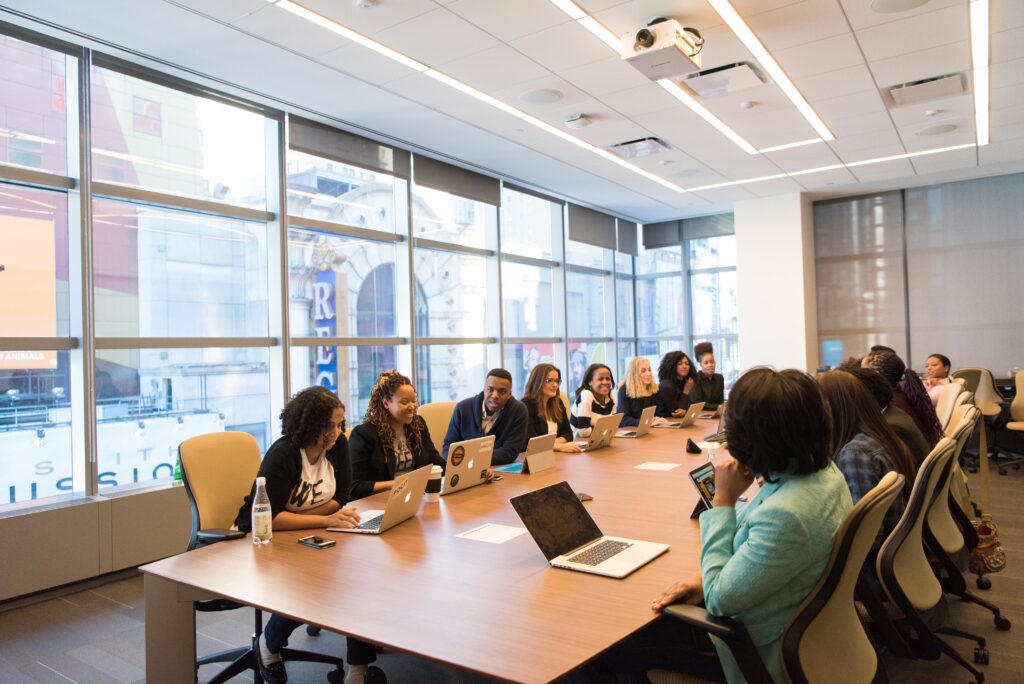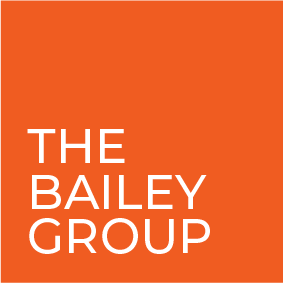
The Enduring Power of Leadership Cohorts
Within a few weeks, I realized that to be the best leader possible in my new role and to build my network, I had to find a meaningful way to connect with colleagues in other parts of our business and broaden my perspective on the enterprise. Fortunately, an opportunity came my way to apply for a year-long cohort program for women in leadership, hosted by my employer. To this day, it remains one of my best career experiences.
My cohort program included several components: 1) guidance from two senior leaders who served as mentors for myself and 11 other participants, 2) monthly meetings centered on relevant leadership topics, often with guest speakers from various parts of our organization, 3) peer-to-peer mentoring, and 4) exposure to a wide variety of functional areas within the business. Each of these experiences was valuable to my growth as a leader. The experience which had the most enduring impact on me was the relationships I built with my cohort peers, who taught me so much about other parts of the business. A smaller group of us built strong friendships and became members of one another’s “board of directors” for feedback and support, and we continue to support each other to this day.
Flash forward 13 years: I now work with The Bailey Group and help sell and facilitate cohort leadership development programs for our clients. Because of my experience back in 2010-11, it’s not hard for me to talk enthusiastically about the multiple benefits of a cohort experience for mid-level leaders. While individual and team leadership coaching have their own unique applications and benefits, a cohort experience provides a unique opportunity to harness the power of peer coaching and build strong bonds with colleagues to the benefit of the group and the entire organization, during the formal program and long after it ends.
Key Components to a Cohort Leadership Experience
One of the value propositions we feel proud to share with our TBG clients and prospects is how we customize our leadership development programs to meet the unique needs of each client. That said, when we partner with our clients to identify the ideal environment for a cohort program, there are five key components that we highly recommend.
- Selection of High-Potential, Engaged Participants
If your organization uses a 9-box (https://www.aihr.com/blog/9-box-grid/) or similar approach to talent development, you have a tool at the ready to select participants for a leadership cohort program. If not, you can seek nominations from department heads based on their assessment of mid-level leaders who show the greatest potential to take on senior leadership roles in the future. Once they’ve been selected and invited, the employee must have the capacity to participate and enthusiasm for the program. If they have just taken on a new role or are involved in a time-intensive project, it may not be the right cycle for them. If succession planning is a driving motivator for your cohort program, it’s also important to inquire about a potential participant’s desire to advance within your organization.
Communication around the nomination or selection process is critical to the smooth launch of your program, especially if it is the first of its kind in your organization. This leads to the second key component to a successful cohort program, the endorsement and involvement of your senior leadership team.
- Senior Leadership Team & Management Engagement
The early endorsement, active communication in support of, and involvement of your executive team members in the cohort leadership experience is critical. If participants don’t sense active support and enthusiasm from senior leaders and their direct managers, they will be less inclined to engage fully and invest the time needed to benefit from all components of the program.
Executive team support can be easily visible to the entire organization in several ways, including:
- Formal executive sponsorship of the program and the individual participants
- Launch communication from the top of your organization congratulating the participants and encouraging others to talk their manager if interested in future participation
- Engagement in group sessions through panel discussion, presentation on a topic, etc.
- Incorporation of involvement into yearly performance or development goals for participants
- Regular manager check-in on progress and support for time needed to engage fully in the program
The most successful deployment of this component we have seen at TBG involves each member of a senior leadership team actively engaging with the program and offering their own stories of highs and lows along their individual leadership journeys.
- Alignment with Business Goals
If your organization has developed a leadership competency model, you have a “plug-and-play” tool for participants to align the goals for their participation in the cohort program with the leadership attributes identified as most critical for the success of your organization. The alignment of their individual goals and your overall competency model can be accomplished through coaching and assessment – more on those in a moment.
For example, if your senior leadership team has identified a need to develop strategic capabilities at the next level down in your organization, and you have defined “Strategic Vision” as a core competency, participants can articulate their growth in this area as an intended outcome, and group sessions can be designed around the topic. One of TBG’s clients dedicated a cohort session to a deep and candid discussion among SLT members and cohort participants about “what does strategy really mean and look like at our company?” It turned out to be the most highly rated session of the entire program. (Hint: vulnerability in the discussion was key!)
Another way to align a cohort leadership program with business goals is to provide the opportunity for participants to engage in a real-world project, completed over time with deliverables and a report-out to the senior leadership team. For example, if embedding diversity, equity, inclusion, and belonging (DEIB) practices into your organization is a goal of the business, assign the participants to build out your DEIB strategy and a plan for execution. With a project like this you’ll be ticking off several boxes at once: completion of a key strategic goal for the organization; building key leadership skills like collaboration, team building, and decision-making; and SLT visibility and awareness of the capabilities of high-potential participants through the report out on the project.
- Individual Assessment and Leadership Coaching
As hi-po, mid-level managers participate in a cohort program, they are learning from other leaders in the organization, including their peers, through topical discussions, projects, and peer-to-peer coaching. All of these can be re-enforced and internalized by supporting each leader with an individual coaching experience. At TBG we start with an assessment process (we use the Hogan Suite and/or 360) for each participant to help them understand how others experience working with them and become more self-aware of the behaviors that tend to hold them back or derail them. When a cohort participant can combine insights from an assessment with discussion of their organization’s critical leadership competencies, and discuss that integration with a coach, they can hone in on specific development goals that also benefit the organization. A coach can also help the participant stay focused on those concrete goals through the program and find opportunities to work on the goals throughout the other program components.
For example, if agility is a core leadership competency in your organization, a cohort participant may identify this as an area for development, and then work with their coach to uncover opportunities in their daily work to build their agility muscle. The participant and coach can also discuss areas within the cohort discussions or project work where agility comes into play and can be practiced.
- Bonus: Networking
Although the four components discussed are the most critical for a successful cohort leadership development program, there is a “bonus component” you can incorporate to supercharge the program’s impact: networking opportunities. The enduring relationships I built during my cohort experience are one of the most rewarding outcomes for me in my journey as a leader. When you provide opportunities for participants to gather – both in-person and virtually – to get to know each other better and build communication bridges throughout the organization, you are cultivating an environment for ongoing discussions and peer coaching on the leadership skills they are building. Networking events also allow leaders from different functional areas to collaborate, build trust, and organically find synergistic opportunities.
If you believe your organization can benefit from a cohort development program, we are happy to provide insights for building one on your own or developing one as your partner. Please reach out, it’s one of our favorite topics!




